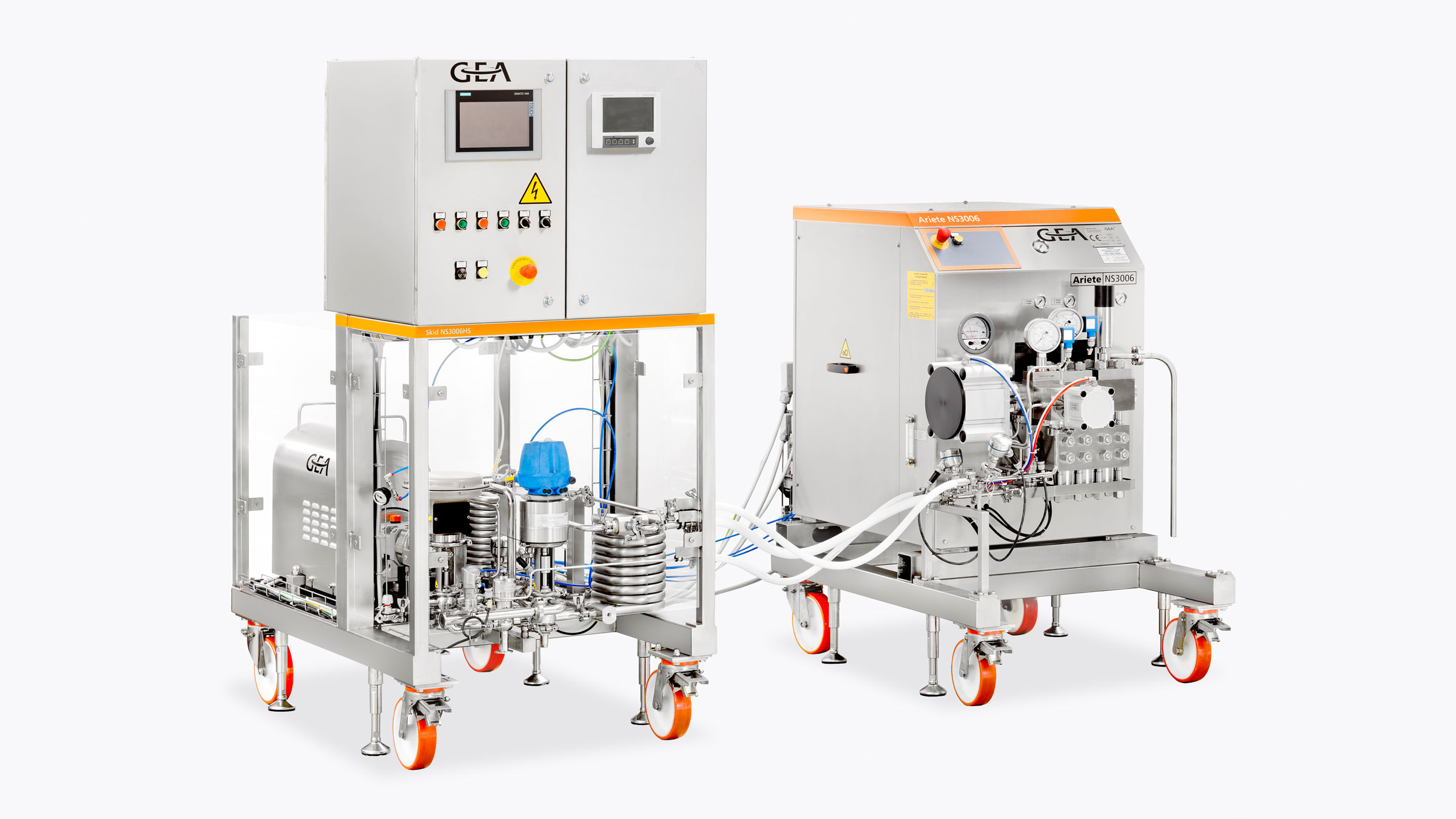Homogenizers Plug & Play Pharma Skid

Homogenizers Plug & Play Pharma Skid
Distributor & Service Provider In India
Inkarp Instruments, a trusted GEA partner, introduces Plug & Play Pharma Skid Homogenizers in India, pre-configured, skid-mounted solutions for pharmaceutical applications.
GEA, Pharma Skids are "turnkey" solutions for pharmaceutical and biotechnology applications at industrial level.
With an innovative ergonomic geometry and design, the XStream Lab Homogenizer is suitable to carry out tests in your laboratory and to ensure the scalability of obtainted results in industrial scale production.
High pressure Pharma Skids for industrial production
Pharma Skids are designed as autonomous systems that can be customized for any production requirement and are capable of processing a wide range of applications, up to a maximum pressure of 1500 bar. Our Skids are able to achieve effective particle size reduction with maximum efficiency and optimal yield in cell rupture, nanoparticles and nanoemulsions production with energy saving.
In the standard version they are composed of:
- feed pump with by-pass system
- homogenizer
- electrical power board
A long list of options is always available to meet different production needs offering very different possibilities, including heat exchanger, a control system for the release of dust and instruments for measuring flow rate, temperature, conductivity and turbidity.
Reimagine liquids

It may surprise you how many products need homogenization in their manufacturing process to make them more compatible with your daily life. Stabilization and a longer shelf life have always been among the highest priorities in many different processing industries but, especially nowadays, as lifestyles continue to change rapidly, they are becoming more and more valued.
Efficiency and excellent performance guaranteed
The Pharma Skids are now available for different sizes of the Ariete Series homogenizers; they are capable of working in aseptic conditions, comply with the pharmaceutical regulations and follow the cGMP and Gamp5 validation standards. They are therefore ideal for the pharmaceutical and biotechnology sectors, but also for those fields of application concerning pharma food and nutraceuticals.
The result on the finished product are satisfactory: high efficiency and excellent performance in terms of particles reduction.
They are available for continuous or collective processing and for the production of nanoemulsions or nanodispersions allowing significant energy savings compared to other cell disruption systems.

